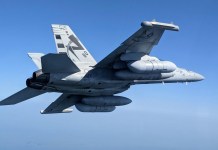The US Navy is planning to procure at least 120 ‘Blackwing 10C’ submarine-launched drones from American defense contractor AeroVironment. This will boost the surveillance and intelligence gathering capabilities of the Navy.
According to the request for proposal (RFP), the Naval Sea Systems Command (NAVSEA) plans to buy these unmanned aerial vehicles (UAVs). The acquisition of the UAVs is expected to be completed by May of 2023, following which the first drone will be delivered to the US Navy in August.
The drones are small in stature, with a wingspan of 27 inches, and weigh only four pounds (1.81 kilograms).
According to the official website of AeroVironment, the UAVs provide high-speed data and communication relays across domains from undersea and surface vessels with the help of a built-in secure digital data link.
The drones have an inertial/GPS autopilot system and a secure digital data link to maintain communications with the submarine.
There is a two-step process for the launch of the drones, where a canister containing the drone is ejected first from an underwater vessel, following which the canister then surfaces and shoots the drone into the air.
The UAVs, in order to fit inside a canister, possess two pop-out wing sets with a span of 27 inches, while also being powered by an electric motor-driven pusher propeller.
They can be launched from both submerged submarines and unmanned underwater vehicles (UUVs).
While the RFP notice does not categorically mention how they will be launched, during demonstrations in the past, the Blackwing drones have been fired from submarines’ three-inch countermeasures tubes.
“The UAV, which is being procured under the Submarine-Launched Unmanned Aerial System (SLUAS) Program, has already been developed, tested, and demonstrated successful integration with the rest of the SLUAS components and subsystems,” said the US Navy.
According to analysts, small-size submarine-launched drones could be used in surveillance and intelligence gathering missions. They could be hard to detect because of their size and fact that they are launched from an underwater platform.
Follow EurAsian Times on Google News




